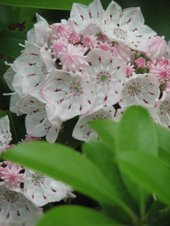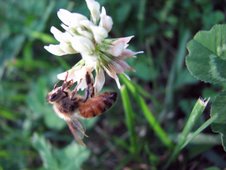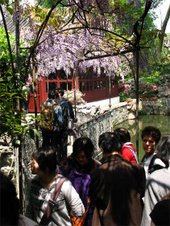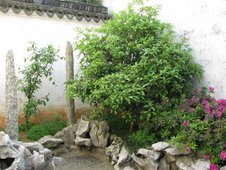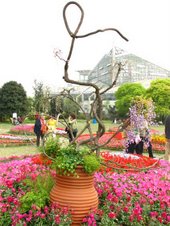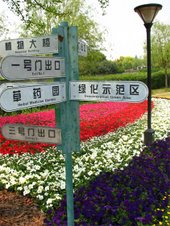In early June, Virginia’s temperatures soared to record high 100s. These high temps usually don’t arrive till August. I was in northern California during this time where we also experience record breaking high temperatures. Do these record breaking high temps represent global warming? The summer solstice, the longest day in the Northern Hemisphere when the sun is directly overhead at noon, arrives June 21st.
The occasional cool mornings are perfect for continuing garden preparation. Container grown shrubs can still be planted, but water frequently. Scatter seeds of forget-me-nots in damp shady places. Perennials can still be planted, but for several days must be watered and protected form the hot sun. For autumn blooms, plant dahlias, mums, and salvias. If we have less than one inch of rain in a week; water your plants.
Irises and daffodils were lovely thanks to a cool and wet spring. Bearded irises can be divided anytime from now until September. If large clumps of daffodils did not produce many blooms; they probably need to be divided.
Roses are considered the flower of love and continue to inspire poets and artists. The flower has many herbal and aromatherapy uses. Every summer I use rose hips from wild roses to make a tea high in vitamin C.
While I was in California I stayed in a friend’s house in Mill Valley. I’m in love with both her dog and her roses. Next spring I plan on starting a rose garden. For cane roses cut the rose blossoms just above a 5 leaflet to assure a strong stem for the next bloom. Plant garlic and rue near your roses to deter Japanese beetles. Geranium, alyssum, nasturtiums, rosemary and thyme attract beneficial insects. For mildew spray potassium bicarbonate fungicides in humid climates – like Virginia. Continue to fertilize until 6 weeks before the first expected frost.
Rhododendrons should be dead headed by hand about two weeks after the blooms have faded. Now is a good time to take softwood cuttings of shrubs such as azalea, boxwood, and spirea for propagation into new plants.
Determine the texture and sweetness of vegetables by the time of day you harvest. Pick peas and corn late in the day for maximum sweetness. Lettuce, and other leafy veggies and cucumbers are crisper if picked early morning. Pick strawberries in early morn. Do not wash or stem the berries until ready to use and store in a covered container in the refrigerator. If harvesting herbs for essential oils; pick just before flowering on a sunny day.
Do you have cats visiting your vegetable garden? While in northern California I helped in a community veggie garden by sticking many small branches in the soil and mulching with coconut hulls in order to prevent the cats from wanting to use the area as a “cat box”.
Thursday, June 19, 2008
Sunday, May 4, 2008
The Russian River‘s Secret Horticulture
Surrounded by carnivorous eating plants was not a situation I’ve experienced in my past visits to the wine district of Northern California. In mid February I traveled to the Russian River area of Sonoma County to explore a few of the less well known gardens and parks.
First I visited the Sonoma Horticulture Nursery, which specializes in rhododendrons and azaleas, along with a wide selection of shade-loving trees, shrubs and perennials. The eight plus acres of nursery and gardens are open all year to visitors. Azaleas and rhododendrons cover the hills which surrounded a shaded pond. The azaleas were beginning to bloom and I was tempted to purchase several. The owner Polo bought this nursery in 1976. He is proudly showed off a few of his 20 to 30 varieties of magnolias and his swamp garden with weird Cypress knees rising out of the muck. <http://www.sonomahort.com/>
I lunched in the secret garden patio at the back of the Mosaic Restaurant(http://www.mosaiceats.co/). Enjoying creatively prepared vegetables gathered from the owner’s garden and other local farms.
Not far away is the Armstrong Woods State Reserve(http://www.parks.ca.gov/) with hiking and driving paths through majestic redwoods. Check out the 1400 year old redwood “Colonel Armstrong”. I was sorry to miss the rare Calypso orchids which were not yet in bloom. Also I did not have time to visit the coast which was ablaze with masses of blue irises.
In Sonoma County it is impossible to escape the rolling hills crisscrossed by rows of vines. In the spring the mustard plants add a golden swath between the vines. Many wineries have developed gardens with plants and herbs that match their wine varieties. In these gardens you are encouraged to walk with glass of wine in hand and taste the plants matching the taste and smell of their wines with certain herbs..
Some wineries have elaborate gardens which are used for wedding and events; others offer quiet maze like paths. Kendall Jackson Wine Center has an educational herb garden and Korbel is known for its rose garden.
Russian River resorts also offer delightful gardens and unusual plants. I stayed at the “green” Creekside Inn & Resort which is surrounded by redwoods (one a rare albino) and is near the Russian River. Lynn and her handsome sons are knowledgeable about the area and created delicious breakfasts and snacks. Their cabins, one-bedroom apartments, units, and bed & breakfast rooms are environmentally friendly. Their cottages are wheelchair and dog friendly.
The Sonoma Orchid Inn, a 1906 farmhouse bed & breakfast inn is owned and run by Brian and Dana who are avid orchid collectors. Orchids are displayed through out the Inn and their greenhouse displays their award winning rare species including their own hybrids.
The Village Inn & Restaurant(http://www.villageinn-ca.com/) was custom built in 1906 as a private vacation home. The lovely landscaped gardens offer views of Russian River wildlife and mountains. Their restaurant offers Classic American cuisine created with fresh seasonal ingredients from their organic herb garden and local Sonoma farms.
Returning to Virginia I bought a Venus fly trap at a garden show. In California I had learned form Peter, the owner of California Carnivores, that most insect-eating plants are local to the wetlands of the east coast from Canada to Florida. Since the wetlands have been drained; only small protected areas still support these plants. I have visions of restoring a river bank and small bog behind my house with these plants. If you are interested in these sci-fi type plants; visit his store in Sebastopol or buy one of his books.
First I visited the Sonoma Horticulture Nursery, which specializes in rhododendrons and azaleas, along with a wide selection of shade-loving trees, shrubs and perennials. The eight plus acres of nursery and gardens are open all year to visitors. Azaleas and rhododendrons cover the hills which surrounded a shaded pond. The azaleas were beginning to bloom and I was tempted to purchase several. The owner Polo bought this nursery in 1976. He is proudly showed off a few of his 20 to 30 varieties of magnolias and his swamp garden with weird Cypress knees rising out of the muck. <http://www.sonomahort.com/>
I lunched in the secret garden patio at the back of the Mosaic Restaurant(http://www.mosaiceats.co/). Enjoying creatively prepared vegetables gathered from the owner’s garden and other local farms.
Not far away is the Armstrong Woods State Reserve(http://www.parks.ca.gov/) with hiking and driving paths through majestic redwoods. Check out the 1400 year old redwood “Colonel Armstrong”. I was sorry to miss the rare Calypso orchids which were not yet in bloom. Also I did not have time to visit the coast which was ablaze with masses of blue irises.
In Sonoma County it is impossible to escape the rolling hills crisscrossed by rows of vines. In the spring the mustard plants add a golden swath between the vines. Many wineries have developed gardens with plants and herbs that match their wine varieties. In these gardens you are encouraged to walk with glass of wine in hand and taste the plants matching the taste and smell of their wines with certain herbs..
Some wineries have elaborate gardens which are used for wedding and events; others offer quiet maze like paths. Kendall Jackson Wine Center has an educational herb garden and Korbel is known for its rose garden.
Russian River resorts also offer delightful gardens and unusual plants. I stayed at the “green” Creekside Inn & Resort which is surrounded by redwoods (one a rare albino) and is near the Russian River. Lynn and her handsome sons are knowledgeable about the area and created delicious breakfasts and snacks. Their cabins, one-bedroom apartments, units, and bed & breakfast rooms are environmentally friendly. Their cottages are wheelchair and dog friendly.
The Sonoma Orchid Inn, a 1906 farmhouse bed & breakfast inn is owned and run by Brian and Dana who are avid orchid collectors. Orchids are displayed through out the Inn and their greenhouse displays their award winning rare species including their own hybrids.
The Village Inn & Restaurant(http://www.villageinn-ca.com/) was custom built in 1906 as a private vacation home. The lovely landscaped gardens offer views of Russian River wildlife and mountains. Their restaurant offers Classic American cuisine created with fresh seasonal ingredients from their organic herb garden and local Sonoma farms.
Returning to Virginia I bought a Venus fly trap at a garden show. In California I had learned form Peter, the owner of California Carnivores, that most insect-eating plants are local to the wetlands of the east coast from Canada to Florida. Since the wetlands have been drained; only small protected areas still support these plants. I have visions of restoring a river bank and small bog behind my house with these plants. If you are interested in these sci-fi type plants; visit his store in Sebastopol or buy one of his books.
Sunday, April 20, 2008
April Gardening Notes
April is the time of year when I can’t resist buying annual flowers to add color to my gardens and containers. I look for plants with many unopened blooms. Plants which have open blooms are often root bound and will grow slower. For a constant supply of cut flowers, I plant seeds at about 2 week intervals until mid July.
We probably all have areas of poor soil. This is the perfect place to plant the colorful nasturtiums. Wait for warm soil before seeding. Blooms should appear within 50 days. Too much water and fertilizer sends energy to the leaves not the flowers.
April is a good time to divide chrysanthemums. Pinch off the tops down to 6 inches. Pinch every month to keep the plants at this height until late July. Feed monthly with liquid fertilizer such as fish emulsion until the buds show color.
Tulip leaves which have yellowed halfway down can be removed. Fertilize them at the same time. Dead head spring bulbs leaving the flower stem intact. After daffodils flowers, which have been decorating and scenting my rooms die, I don’t throw them away. Instead I scatter the flowers over my tulips and other deer loving plants. The deer bite into the daffodil stem by mistake and will leave the plant alone. Dead daffodils are a cheap and easy deer deterrent.
Finally I discovered a use for plastic packing peanuts. I use the plastic, not biodegradable peanuts, as a substitute for the gravel or stones I place in the bottom of my flower pots. A piece of pantyhose in the bottom will keep soil from dripping out.
Lilacs should be feed with manure and lime. Last azalea feeding should be after blooming. Crepe myrtles should be feed this month and July with a high phosphorus fertilizer. Fertilize tea roses once a month. Small, sparse and pale dogwood leaves are probably begging for fertilizer. Have the soil under the tree tested.
Some herbs that thrive in the sandy soil of sunny rock gardens and brick walkways are creeping thyme, sage, santolina, lavender and garlic.
The mustard greens are blooming; regrettably, I haven’t had time to harvest them. The leaves, buds and flowers are edible. This time of the year I see them for sale in health food stores. Other edible weeds are pigweed, purslane, chickweed, lamb’s quarters and dandelion greens. In my vegetable garden I’m planting Swiss chard, spinach and lettuce.
Many insects are your garden’s best friend. Bees pollinate; wasps destroy whiteflies and aphids; yellow jackets feed on flies and caterpillars; lady bugs eat aphids, mealy bugs, and spider mites. Other beneficial insects are dragonflies, lacewings, beetles, spiders, and beneficial mites. So avoid toxic sprays and dusts which kill beneficial insects, frogs and lizards.
We probably all have areas of poor soil. This is the perfect place to plant the colorful nasturtiums. Wait for warm soil before seeding. Blooms should appear within 50 days. Too much water and fertilizer sends energy to the leaves not the flowers.
April is a good time to divide chrysanthemums. Pinch off the tops down to 6 inches. Pinch every month to keep the plants at this height until late July. Feed monthly with liquid fertilizer such as fish emulsion until the buds show color.
Tulip leaves which have yellowed halfway down can be removed. Fertilize them at the same time. Dead head spring bulbs leaving the flower stem intact. After daffodils flowers, which have been decorating and scenting my rooms die, I don’t throw them away. Instead I scatter the flowers over my tulips and other deer loving plants. The deer bite into the daffodil stem by mistake and will leave the plant alone. Dead daffodils are a cheap and easy deer deterrent.
Finally I discovered a use for plastic packing peanuts. I use the plastic, not biodegradable peanuts, as a substitute for the gravel or stones I place in the bottom of my flower pots. A piece of pantyhose in the bottom will keep soil from dripping out.
Lilacs should be feed with manure and lime. Last azalea feeding should be after blooming. Crepe myrtles should be feed this month and July with a high phosphorus fertilizer. Fertilize tea roses once a month. Small, sparse and pale dogwood leaves are probably begging for fertilizer. Have the soil under the tree tested.
Some herbs that thrive in the sandy soil of sunny rock gardens and brick walkways are creeping thyme, sage, santolina, lavender and garlic.
The mustard greens are blooming; regrettably, I haven’t had time to harvest them. The leaves, buds and flowers are edible. This time of the year I see them for sale in health food stores. Other edible weeds are pigweed, purslane, chickweed, lamb’s quarters and dandelion greens. In my vegetable garden I’m planting Swiss chard, spinach and lettuce.
Many insects are your garden’s best friend. Bees pollinate; wasps destroy whiteflies and aphids; yellow jackets feed on flies and caterpillars; lady bugs eat aphids, mealy bugs, and spider mites. Other beneficial insects are dragonflies, lacewings, beetles, spiders, and beneficial mites. So avoid toxic sprays and dusts which kill beneficial insects, frogs and lizards.
Sunday, February 10, 2008
February gardening notes
Has the lack of outdoor flowers caused you to go in to withdrawal? For your flower fix visit a garden show. This weekend, Feb. 21 -24 is the Maymont Flower & Garden Show (maymontflowershow.com) at the Richmond Convention Center. In March the Philadelphia Flower Show (theflowershow.com) is the 2th thro 9th and the San Francisco Show (gardenshow.com/sf) is the 12th thro 16th. Come April is the Historic Garden Week in Virginia (vagardenweek.org) April 19th thro 27th. Also in April is the Cincinnati Flower Show (cincyflowershow.com) which will be held outside from April 19th thro 27th. May 20th thro 24th is the grand Chelsea Show (rhs.org.uk/chelsea) in Eng.
I decided to google for info on the continuing care of my Amaryllis (Hippeastrum). I was amazed to find more than 250 sites. One site amaryllis.com only sells Amaryllis bulbs. For “after blooming care” cut off only the dead flowers. The flowering stem should not be cut until it starts sagging. After our last frost the pot can be placed outside in full sun. To provide food for the bulb you should continue to water and fertilize all summer.
When the leaves begin to yellow, cut the leaves back to about two inches from the top of the bulb and bring inside before the first frost of fall. This site then suggest removing the bulb from the pot and placing it in the frig at 40-50 deg. For a minimum of 6 weeks. Other sites say to put the plant in a 55 degree room - not the refrigerator. Since The Amaryllis Bulb Company is located in Florida they probably can not find a 55 degree room in late Fall. The plant should be placed back in sunlight 8 weeks before you would like them to bloom.
Were your paperwhites tall and floppy this holiday? They needed a drink. Professor Bill Miller of Cornell's Flower Bulb Research Program discovered that paperwhites(Narcissus tazetta) grown in water with a 5% concentration of alcohol bloomed beautifully on one-third shorter stems. Since most liquors are about 40% alcohol, that works out to 1 part booze to 7 parts water. Gin, vodka, whiskey, rum, tequila and rubbing alcohol work well, but wine and beer are too high in sugar. Start watering with this mixture once the roots begin growing and the green shoots reach about 1 to2 inches. This watering solution stunts the growth of the plant, but does not affect the blooms.
Native of Mediterranean Europe and Asia Minor paperwhite bulbs, which have not been forced, may be planted outside in zones 8 – 10. They may survive in our area if planted in a protected southern exposure site.
I’ve been watching a clump of daffodils which are growing outside my carport. When the weather is in the 40s the buds turn yellow. Then we get a freeze, they close up to green. The same buds have been slightly opening and closing for over a month.
This month our temperatures are ranging from 20 to70 degrees. Daffodils and crocuses are popping out. Winter jasmine’s masses of yellow blooms are often mistaken for Forsythia.
Forsythia is easy to force. Every February I cut a few branches, stick them in a jar with water and within a week have small blooms. However Andre & Mark Viette describe professional methods to force blooms. Cut 2 to 3 foot long branches covered with swelling buds, put cut ends in icy cold water and place for 2 days in a cool dark location. Then again cut the ends and place in vase of cold water and display in a sunny location. That is their cold method. Their warm method is even more complicated. Place the cut branches in warm water. Tent the branches and container in plastic and locate in a warm, but darken room.
I decided to google for info on the continuing care of my Amaryllis (Hippeastrum). I was amazed to find more than 250 sites. One site amaryllis.com only sells Amaryllis bulbs. For “after blooming care” cut off only the dead flowers. The flowering stem should not be cut until it starts sagging. After our last frost the pot can be placed outside in full sun. To provide food for the bulb you should continue to water and fertilize all summer.
When the leaves begin to yellow, cut the leaves back to about two inches from the top of the bulb and bring inside before the first frost of fall. This site then suggest removing the bulb from the pot and placing it in the frig at 40-50 deg. For a minimum of 6 weeks. Other sites say to put the plant in a 55 degree room - not the refrigerator. Since The Amaryllis Bulb Company is located in Florida they probably can not find a 55 degree room in late Fall. The plant should be placed back in sunlight 8 weeks before you would like them to bloom.
Were your paperwhites tall and floppy this holiday? They needed a drink. Professor Bill Miller of Cornell's Flower Bulb Research Program discovered that paperwhites(Narcissus tazetta) grown in water with a 5% concentration of alcohol bloomed beautifully on one-third shorter stems. Since most liquors are about 40% alcohol, that works out to 1 part booze to 7 parts water. Gin, vodka, whiskey, rum, tequila and rubbing alcohol work well, but wine and beer are too high in sugar. Start watering with this mixture once the roots begin growing and the green shoots reach about 1 to2 inches. This watering solution stunts the growth of the plant, but does not affect the blooms.
Native of Mediterranean Europe and Asia Minor paperwhite bulbs, which have not been forced, may be planted outside in zones 8 – 10. They may survive in our area if planted in a protected southern exposure site.
I’ve been watching a clump of daffodils which are growing outside my carport. When the weather is in the 40s the buds turn yellow. Then we get a freeze, they close up to green. The same buds have been slightly opening and closing for over a month.
This month our temperatures are ranging from 20 to70 degrees. Daffodils and crocuses are popping out. Winter jasmine’s masses of yellow blooms are often mistaken for Forsythia.
Forsythia is easy to force. Every February I cut a few branches, stick them in a jar with water and within a week have small blooms. However Andre & Mark Viette describe professional methods to force blooms. Cut 2 to 3 foot long branches covered with swelling buds, put cut ends in icy cold water and place for 2 days in a cool dark location. Then again cut the ends and place in vase of cold water and display in a sunny location. That is their cold method. Their warm method is even more complicated. Place the cut branches in warm water. Tent the branches and container in plastic and locate in a warm, but darken room.
Sunday, January 13, 2008
January Gardening Notes
Pruning the seed capsules off the tips of your crepe myrtles will give you larger bloom clusters this summer. Also prune the dead blooms from Rose of Sharon.
Clean your fireplaces and place the wood ashes around lilacs, roses, peonies, clematis, daffodils and vegetable garden. The ashes add both lime and potash to the soil. Do not put the ashes around your acid-loving plants.
If we get a snow storm this year; sprinkle bird seed (the birds will love you), sand or kitty litter on icy walks. Do not use salt which will burn your plants and shrubs and will eat away at bricks. Don’t forget to gently scoop fresh snow off boxwoods and evergreens for the snow may freeze and break branches.
Don’t discard your amaryllis and other forced bulbs (except paper-whites). Cut off the flower heads and place plant in a sunny indoor location. Every second watering add a half dose of fertilizer to the water. In the spring place your potted amaryllis outside (bring back inside in the fall) and plant the other bulbs in your garden.
Poinsettia plants can also be reused each year. Keep the plant in a sunny location where the night time temperature is no colder than 60 degrees. The soil should be kept damp and fertilized lightly when new growth appears. When the temperature is warm enough the plant should be cut back and spent the summer outside. In October bring the plant indoors for 12 hours of darkness a day (I set my 2006 poinsettia in a dark corner of a room.) and in December the bracts will turn to color for Christmas.
It is not too soon to start forcing blooms from flowering shrubs and trees. Forsythia is especially easy. Also try crabapple, peach, plum, pussy willow, quince, winter jasmine and witch hazel.
After a cold snap check to see if any perennials have risen from their beds. This is caused from the ground freezing then thawing. Press the plant’s soil covered roots back into the ground and cover with mulch.
My vegetable garden is still providing arugula, chard, cilantro, parsley and sage. On the north side of the garden I used discarded windows as a wind break. When the temperature hits 32o or below, I throw old sheets over my plants.
With the unseasonable warm weather insects emerge. The Boxelder bugs swam on the southern side of my home and often find entry to the inside. These bugs are usually harmless both to plants and humans, but can stain the house siding.
It is not too early to start planning your spring vegetable garden. Start sowing seeds of cool season vegetables, such as arugula, in indoor pots or trays. Also start seeds of lavender, chives, dill, rosemary, thyme and parsley. Seeds of peas (soak over night), lettuce, spinach and chard can be planted in your garden if protected with a cover of black fabric.
Clean your fireplaces and place the wood ashes around lilacs, roses, peonies, clematis, daffodils and vegetable garden. The ashes add both lime and potash to the soil. Do not put the ashes around your acid-loving plants.
If we get a snow storm this year; sprinkle bird seed (the birds will love you), sand or kitty litter on icy walks. Do not use salt which will burn your plants and shrubs and will eat away at bricks. Don’t forget to gently scoop fresh snow off boxwoods and evergreens for the snow may freeze and break branches.
Don’t discard your amaryllis and other forced bulbs (except paper-whites). Cut off the flower heads and place plant in a sunny indoor location. Every second watering add a half dose of fertilizer to the water. In the spring place your potted amaryllis outside (bring back inside in the fall) and plant the other bulbs in your garden.
Poinsettia plants can also be reused each year. Keep the plant in a sunny location where the night time temperature is no colder than 60 degrees. The soil should be kept damp and fertilized lightly when new growth appears. When the temperature is warm enough the plant should be cut back and spent the summer outside. In October bring the plant indoors for 12 hours of darkness a day (I set my 2006 poinsettia in a dark corner of a room.) and in December the bracts will turn to color for Christmas.
It is not too soon to start forcing blooms from flowering shrubs and trees. Forsythia is especially easy. Also try crabapple, peach, plum, pussy willow, quince, winter jasmine and witch hazel.
After a cold snap check to see if any perennials have risen from their beds. This is caused from the ground freezing then thawing. Press the plant’s soil covered roots back into the ground and cover with mulch.
My vegetable garden is still providing arugula, chard, cilantro, parsley and sage. On the north side of the garden I used discarded windows as a wind break. When the temperature hits 32o or below, I throw old sheets over my plants.
With the unseasonable warm weather insects emerge. The Boxelder bugs swam on the southern side of my home and often find entry to the inside. These bugs are usually harmless both to plants and humans, but can stain the house siding.
It is not too early to start planning your spring vegetable garden. Start sowing seeds of cool season vegetables, such as arugula, in indoor pots or trays. Also start seeds of lavender, chives, dill, rosemary, thyme and parsley. Seeds of peas (soak over night), lettuce, spinach and chard can be planted in your garden if protected with a cover of black fabric.
Subscribe to:
Posts (Atom)






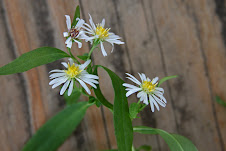












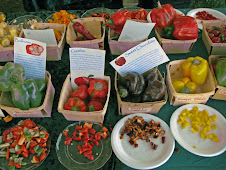LP_gardening_2666.jpg)
LP_gardening_2668.jpg)

LP_garden_2819.jpg)

LP_flower_0563.jpg)
LP_flower_0577.jpg)
LP_flower_0545.jpg)
LP_flower_0555.jpg)
LP_flower_0539.jpg)
LP_dog_0470.jpg)
LP_snow_0467.jpg)
LP_dog_0349.jpg)
LP_tree_8153.jpg)
LP_5028.jpg)
LP_flowers_3940.jpg)
LP-grass_0889.jpg)
LP_redfox_1651.jpg)
LP_squirrel_6978.jpg)
LP_flower_6936.jpg)
LP_squirrel_6864.jpg)
LP-deer_4773.jpg)
LP_4521.jpg)
LP_1251.jpg)
LP_4585.jpg)
LP_3784.jpg)
LP_3759.jpg)
LP_3811.jpg)
LP_3816.jpg)
LP_3847.jpg)
LP_0870.jpg)
LP_4183.jpg)
LP_0891.jpg)
LP_3175.jpg)
LP_3577.jpg)

LP_3068.jpg)
LP_3058.jpg)
LP_3562.jpg)
LP_0118.jpg)
LP_3407.jpg)
LP_3150.jpg)
LP_3011+(2).jpg)
LP_3020.jpg)
LP_2830.jpg)
LP_2782.jpg)
LP_2828.jpg)
LP_1746.jpg)
LP_2648.jpg)
LP_2666.jpg)
LP_2668.jpg)
LP_2493.jpg)
LP_2611crop.jpg)
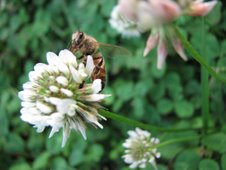
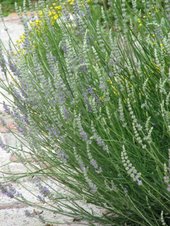
LP_2588.jpg)


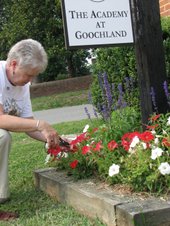


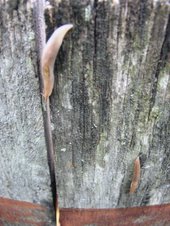
LP_2126.jpg)
LP_2122.jpg)
